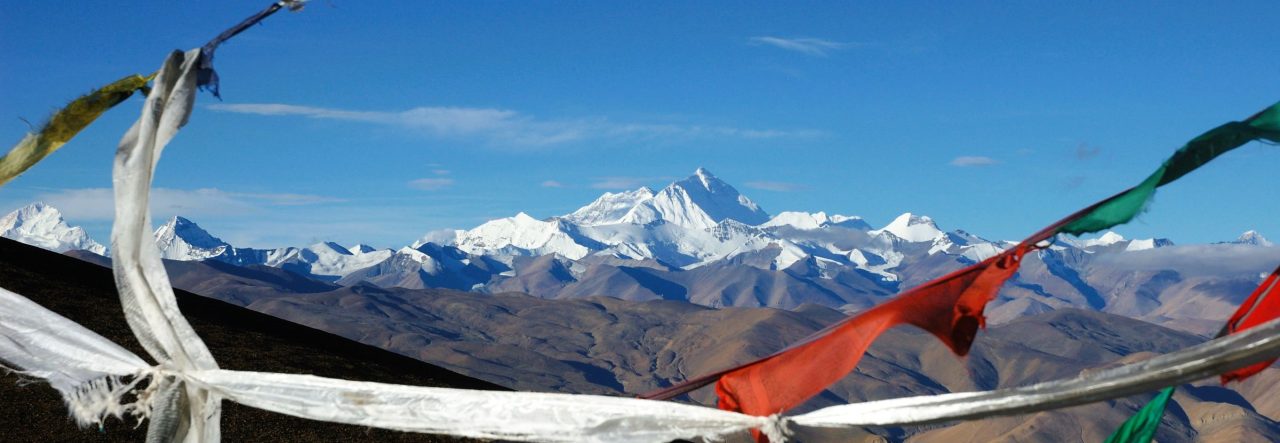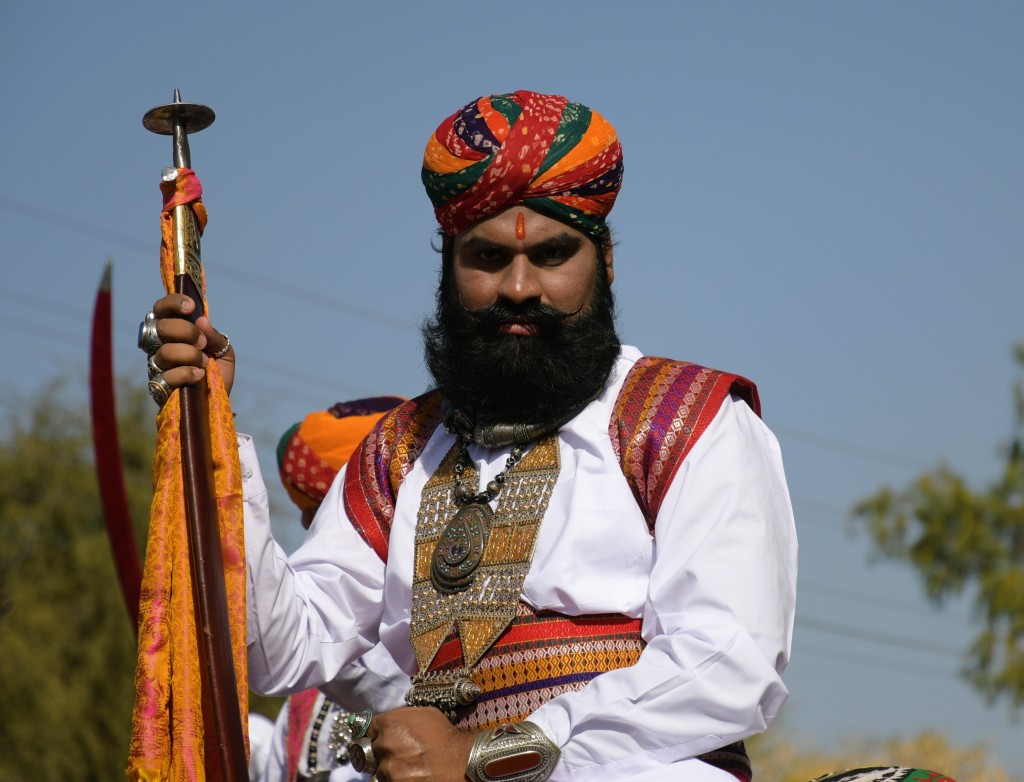
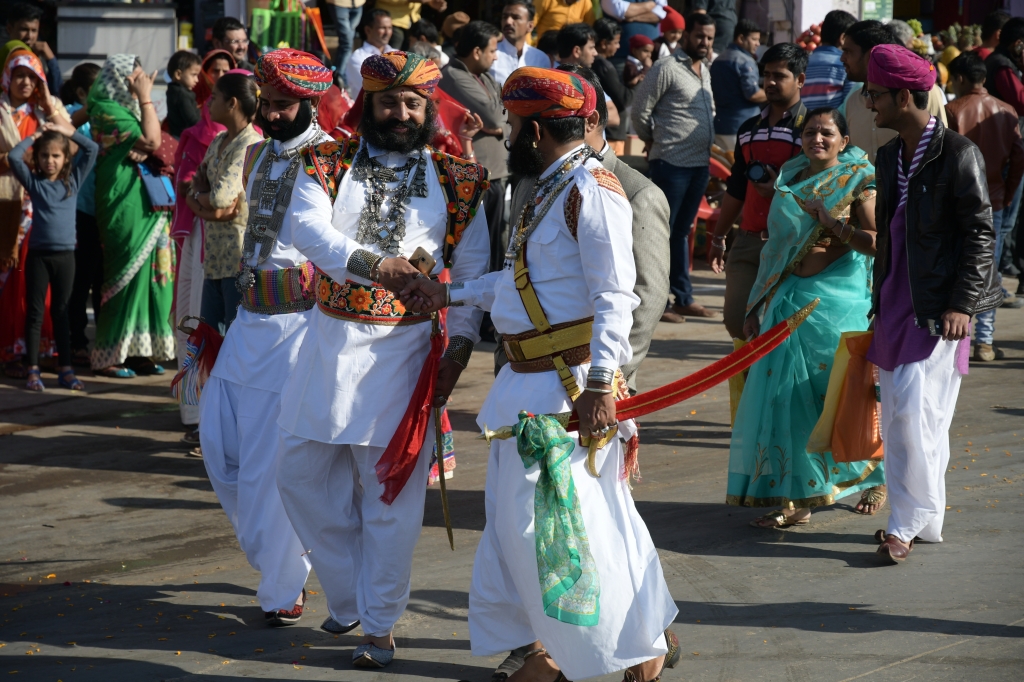
Mr. Desert 2017 sounds better than the title Mr. Mustache 2017. It still sounds a bit cheesy, but the reality is more interesting. I’m talking about Jaisalmer’s three-day Desert Festival. To help you get your bearings, Jaisalmer is in western Rajasthan. Only 57 kilometers from Pakistan, Jaisalmer is near the Thar Desert. A small city by Indian standards, Jaisalmer like other Rajasthan cities, is dominated by a 12th century fort.
Because of billboards and posters every 100 feet, I quickly am reminded that the Desert Festival is occurring now. I meet tourists from France, Germany, UK, Japan, and USA. I also meet tourists from India’s cities of Bangalore and Chennai. Besides the tourists, there are thousands of local people. As one who attended the Sangamon County Fair and the Illinois State Fair untold times, I see this as an Indian version of a county or state fair.
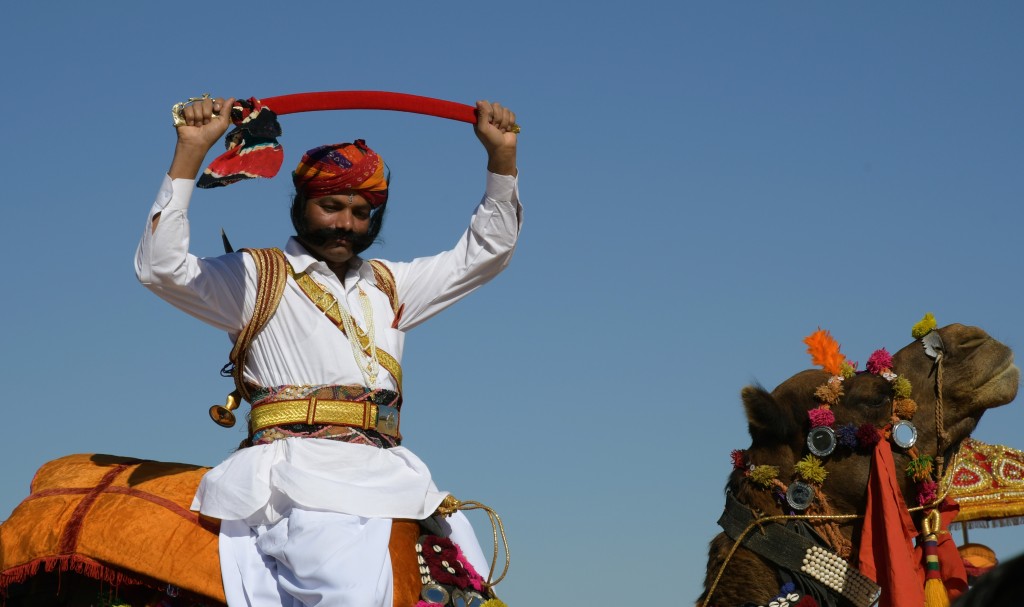
What do I mean by an Indian version? The opening parade is one difference. Although the street looks fairly clean, a small garbage truck precedes the parade, scooping any last minute “deposits” by dogs, cows, or goats that are not part of the procession. The street must be clean because the first marchers are a dozen official-looking men. You can make them out because the thirty brown-shirted police and security forces surround them, and five security officers with rifles are perched atop the near-by buildings watching them closely. Following the dignitaries, Mr. Desert 2016 and the nine contestants for Mr. Desert 2017 emerge. Wearing their finest traditional Rajput clothes, they proceed not on foot, not on horses, but on camels. There are military units on camels, a band on camels, and then camels pulling small carts, each with a young boy and young girl inside. The girl often has enough jewelry to make Cleopatra look poor, and the boy often has a fake, taped-on mustache. Are they the future “Young Mr. Desert? Young Ms. Desert?” I don’t know. Some of the young girls and boys are having great fun smiling and waving; others appear to be terrified being in front of thousands of people. Another feature different from state and county fairs is that this is a “participatory parade.” As the different parts of the parade pass, friends, relatives, and strangers join alongside. Instead of waiting for the end of the parade, I too join walking alongside one of the carts carrying a future Mr. Desert and future Ms. Desert. We march through the archway of a stadium to the free Desert Festival as the welcome committee greets us in Hindi and English and showers us with marigolds.
The Indian version of a fair continues with the all the activities in the main stage area of the stadium. After the long, opening speeches, we see judges grading the nine Mr. Desert contestants. I can only guess at their criteria. Perhaps judges look for authenticity of traditional attire, the extent of traditional attire, the necessary facial hair, and, I suspect, that proud upright bearing of a traditional Rajput warrior. To keep the suspense building, the audience does not learn who wins until the next day!
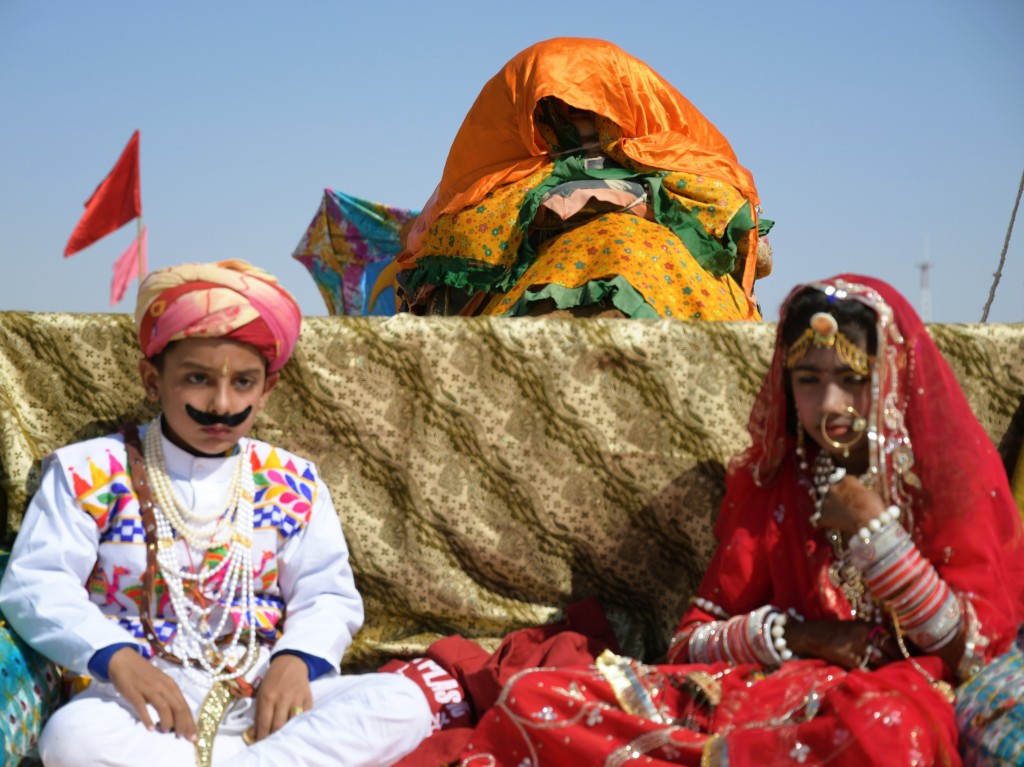
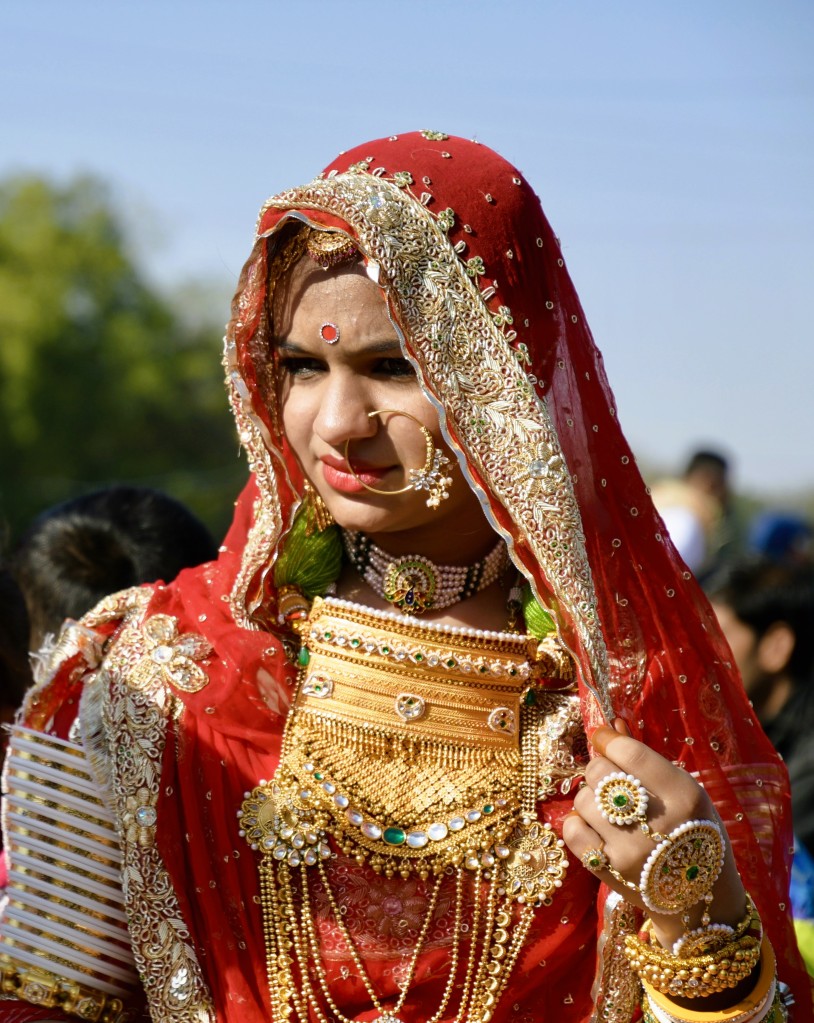
There are numerous music and dancing individuals and groups. To this unbiased observer, it seems that our sons’ middle school orchestra sometimes sounded better while, at other times, the performers could get a recording contract in Atlanta or Nashville. In all cases the performance time for each piece exceeded 12 minutes. A few times, foreigners were ready to clap too early. The time between performances or events was often 30 minutes. This gave people time to socialize, to get snacks, to roam around as families, couples, or packs of teenage girls or boys. it gave foreigners a chance to look for shade from the blazing sun while Indians from southern regions complained about the cold weather.
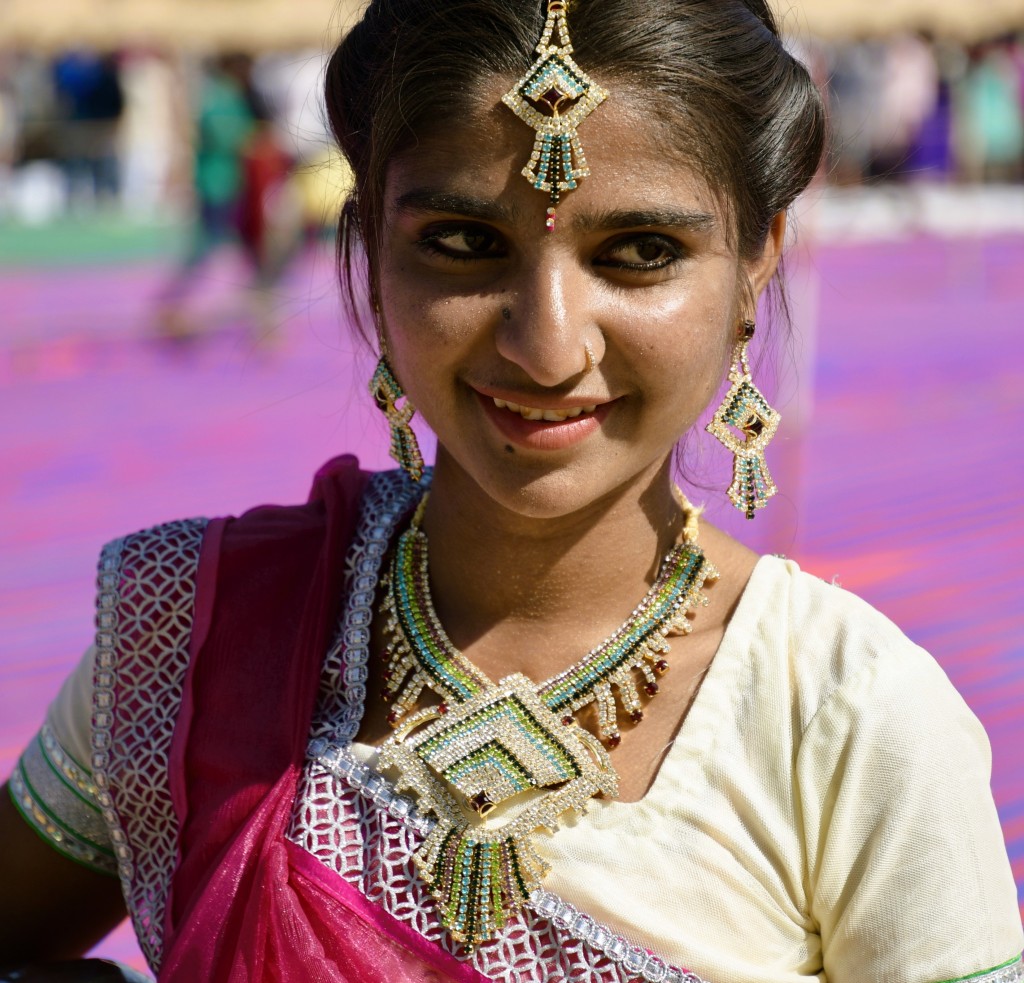
There is also an interesting twist in the two tug of war contests. It is Indians against the foreigners. Men compete against men; women compete against women. Even if I hadn’t been told that the foreigners have won the last two years, I know who will win. The foreigners look like they could be on the Atlanta Falcons offensive line; the Indians look like they will get tired walking from a tuk-tuk to a chai stall. With clairvoyant accuracy, I am right. The foreigners win both matches.
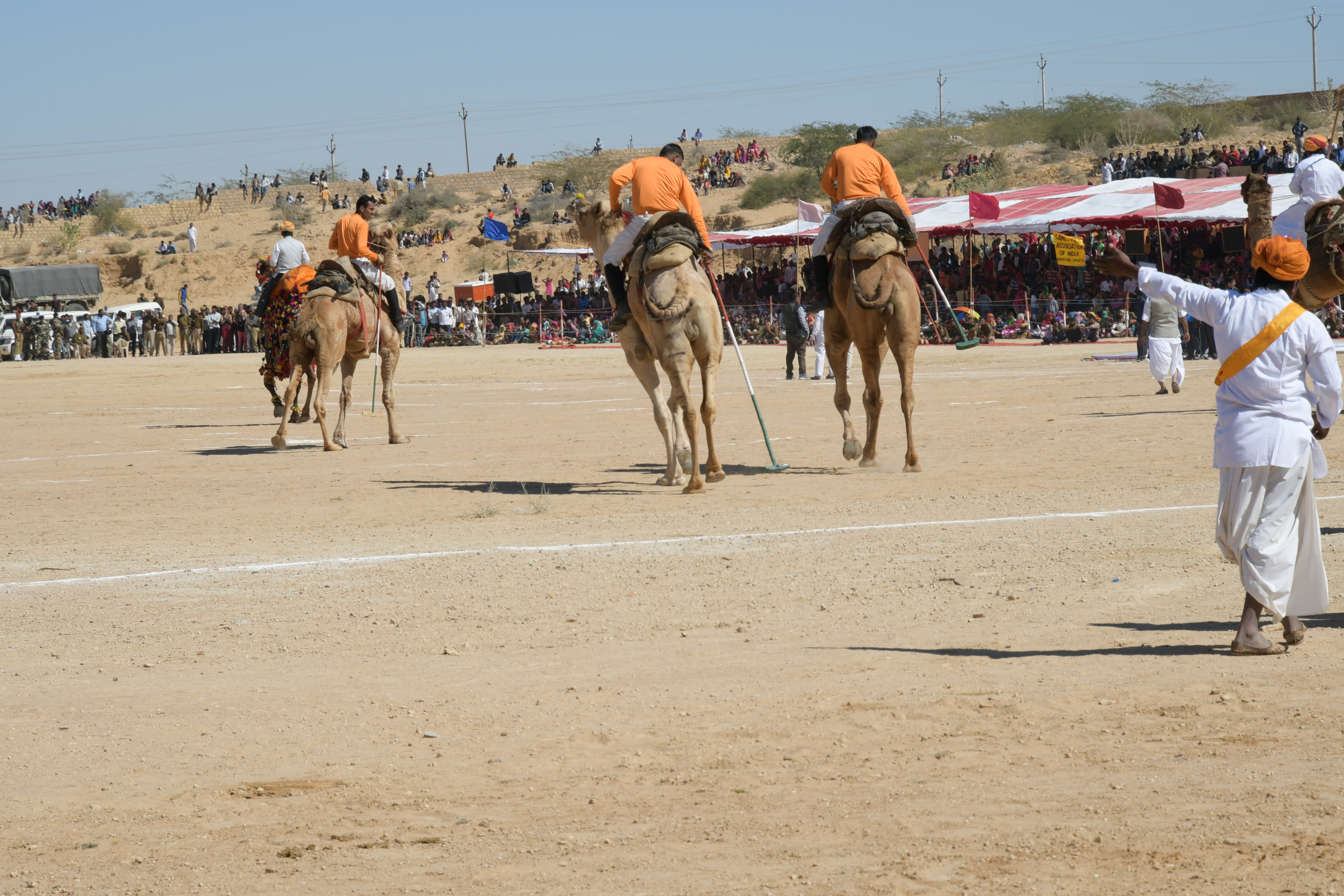
Since this is a Desert Festival, I must mention the camel events. There is a camel decorating contest. There is a camel polo match. There is a camel race. Of course, on the sidelines away from the main events, entrepreneurial fellows have a dozen camels available for camel rides. What parent or grandparent would refuse to pay for their child to have the chance?
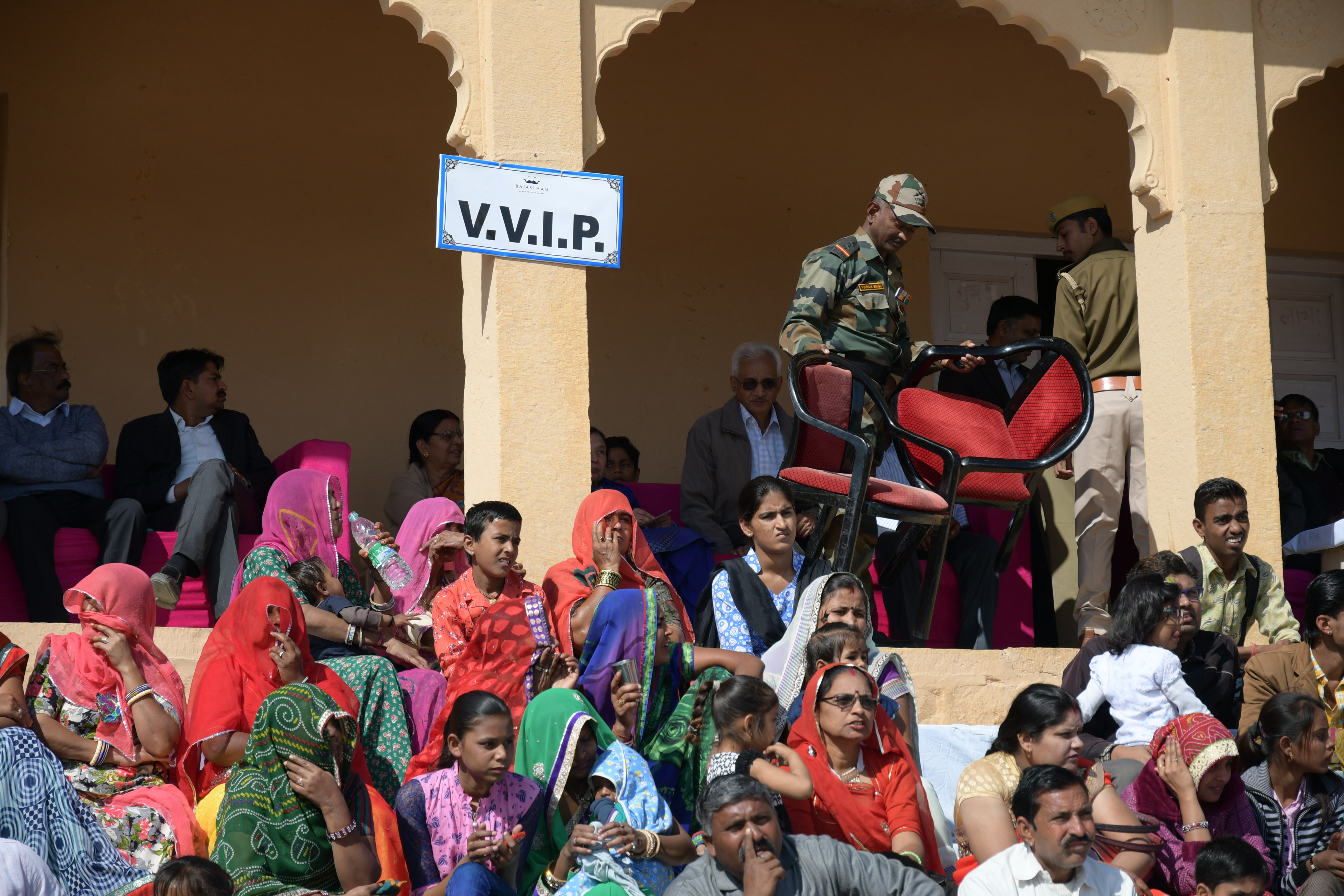
The attendees are also different from the fairs of my childhood. We can start with the stands which are about the size of a Georgia high school football stadium stands. There are sections for the public, for foreigners, for the Army, for the Air Force, for the V.I.P., and for the V.V.I.P. I’m sure you can figure out what V.V.I.P. stands for and that I’m certainly not part of that group. Like the mischievous kids at the county fair, packs of eight- or nine-year-old boys constantly come up to me or bump into me. I am afraid some kids have fast fingers.
As a traveler, I’ve seen my share of traditional “song and dance” shows. Like others, I grow suspicious and calloused for commoditized, packaged performances. Such performances conform to and project a way of life that is often only true in the traveler’s imagination. While the Desert Festival actually had performances for tourists, the festival leaves me with a different feeling. Is it because I see a pride in Jaisalmer men? Is it because I see individuals and herds of camels as I travel outside Jaisalmer, a necessary and useful animal in a harsh environment? Is it because kids are being kids and families are being families as they thoroughly enjoy themselves? I’m not sure of the cause of my own feelings of respect, admiration, happiness in being part of this community event. However, I am sure that like all local events the world over, Jaisalmer’s Desert Festival is fun for all.
